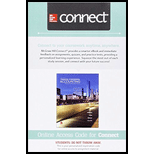
Compute the ratios: a.
Explanation of Solution
Ratio analysis: The analysis of a company using the financial ratios and comparing its trends and measure its performance within the company and the companies of the industry is known as ratio analysis. The main categories of ratio analyses are
Compute ratios for Corporation B.
a. Current ratio: Current ratio is one of the liquidity ratios, which measures the capacity of the company to meet its short-term obligations using its current assets. Current ratio is calculated by using the formula:
Determine current ratio.
Hence, the current ratio is 3.87:1.
b. Quick ratio: It is a ratio used to determine a company’s ability to pay back its current liabilities by liquid assets that are current assets except inventory and prepaid expenses.
Determine quick ratio.
Hence, the quick ratio is 3.87:1.
c. Working capital: Working capital refers to the excess amount of current assets over its current liabilities of a business. It measures the excess funds that are required for the companies to carry out their day to day operations, excluding any new funds that have been invested during the year. Working capital is calculated by using the formula:
Determine working capital.
Hence, the working capital is $430,000.
d. Debt to assets ratio: The debt to asset ratio shows the relationship between total asset and the total liability of the company. Debt ratio reflects the financial strategy of the company. It is used to measure the percentage of company’s assets that are financed by long term debts. Debt to assets ratio is calculated by using the formula:
Determine debt ratio.
Hence, the debt ratio is 41.12%.
e. Accounts receivables turnover ratio: Receivables turnover ratio is mainly used to evaluate the collection process efficiency. It helps the company to know the number of times the accounts receivable is collected in a particular time period. This ratio is determined by dividing credit sales and average accounts receivables.
Determine accounts receivable turnover ratio.
Hence, the accounts receivable turnover ratio is 20.34 times.
f. Inventory Turnover Ratio: This ratio is a financial metric used by a company to quantify the number of times inventory is used or sold during the accounting period. It is calculated by using the formula:
Determine accounts receivable turnover ratio.
Hence, the inventory turnover ratio is 6.8times.
g. Book value per share of capital stock.
Book value per share of capital stock: This ratio is a measure of a share of common stock that is used to determine the value of per share based on the equity available to the common stockholders. This ratio is calculated by using the formula:
Determine book value per share of capital stock.
Hence, the book value per share of capital stock is 12.17 per share.
Working Note:
Calculate current assets.
Calculate current liabilities.
Calculate quick assets.
Calculate total liabilities.
Calculate cost of goods sold.
Calculate common stockholders’ equity.
Calculate shares of common stock outstanding.
Want to see more full solutions like this?
Chapter 14 Solutions
Connect Access Card for Financial and Managerial Accounting

 AccountingAccountingISBN:9781337272094Author:WARREN, Carl S., Reeve, James M., Duchac, Jonathan E.Publisher:Cengage Learning,
AccountingAccountingISBN:9781337272094Author:WARREN, Carl S., Reeve, James M., Duchac, Jonathan E.Publisher:Cengage Learning, Accounting Information SystemsAccountingISBN:9781337619202Author:Hall, James A.Publisher:Cengage Learning,
Accounting Information SystemsAccountingISBN:9781337619202Author:Hall, James A.Publisher:Cengage Learning, Horngren's Cost Accounting: A Managerial Emphasis...AccountingISBN:9780134475585Author:Srikant M. Datar, Madhav V. RajanPublisher:PEARSON
Horngren's Cost Accounting: A Managerial Emphasis...AccountingISBN:9780134475585Author:Srikant M. Datar, Madhav V. RajanPublisher:PEARSON Intermediate AccountingAccountingISBN:9781259722660Author:J. David Spiceland, Mark W. Nelson, Wayne M ThomasPublisher:McGraw-Hill Education
Intermediate AccountingAccountingISBN:9781259722660Author:J. David Spiceland, Mark W. Nelson, Wayne M ThomasPublisher:McGraw-Hill Education Financial and Managerial AccountingAccountingISBN:9781259726705Author:John J Wild, Ken W. Shaw, Barbara Chiappetta Fundamental Accounting PrinciplesPublisher:McGraw-Hill Education
Financial and Managerial AccountingAccountingISBN:9781259726705Author:John J Wild, Ken W. Shaw, Barbara Chiappetta Fundamental Accounting PrinciplesPublisher:McGraw-Hill Education





